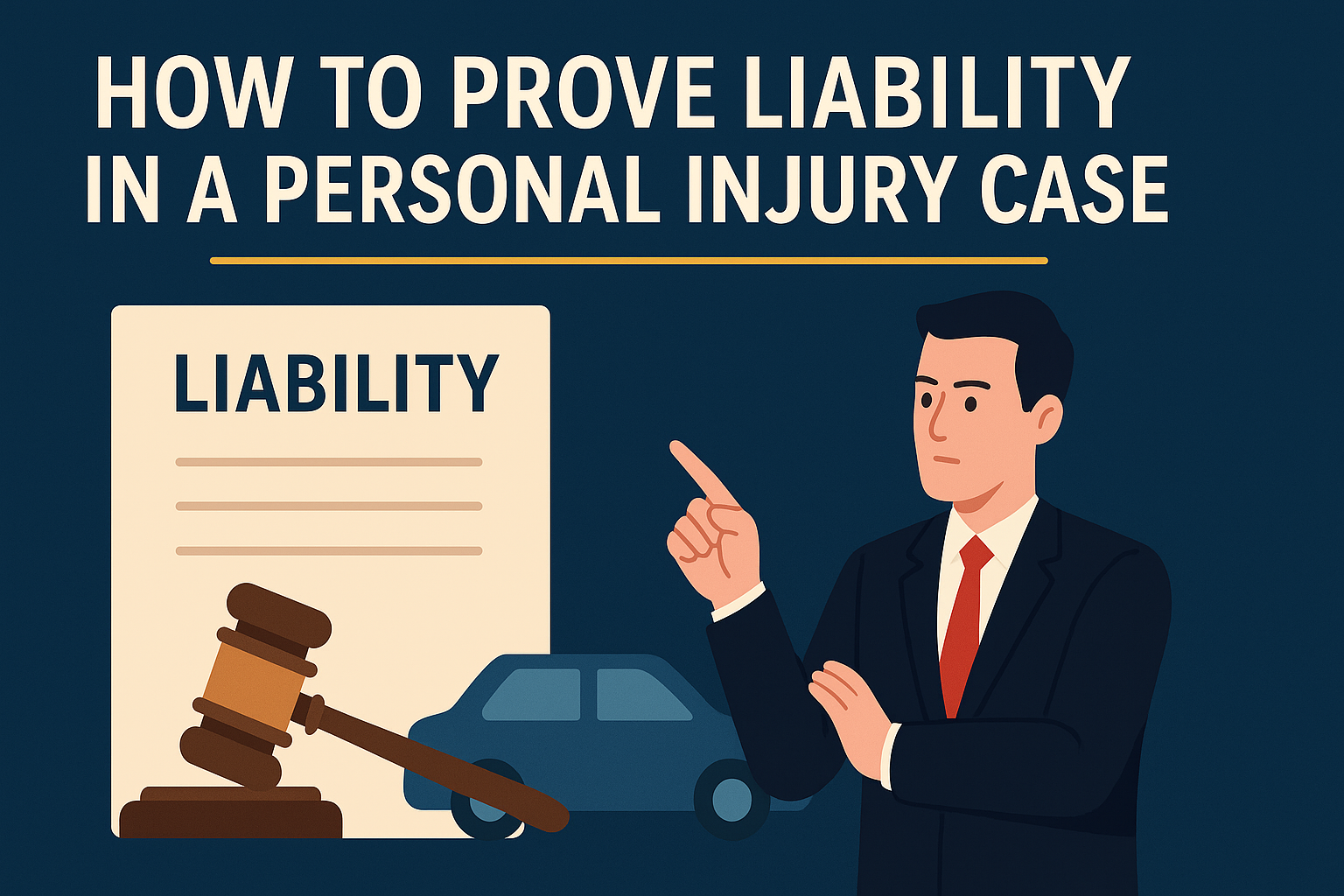When you suffer an injury because of someone else’s actions—or their failure to act—you may be entitled to compensation. But winning a personal injury case isn’t automatic. One of the most crucial steps in the process is proving liability. In other words, you must show that another person, business, or entity was legally responsible for your injuries.
In this guide, we’ll break down how to prove liability step by step, what evidence matters most, and common challenges victims face.
1. Understand the Four Elements of Negligence
Most personal injury cases are built on negligence, meaning the other party failed to act with reasonable care. To prove negligence, you must establish these four elements:
- Duty of Care – You must show that the defendant owed you a duty of care. For example, drivers owe a duty to follow traffic laws and avoid endangering others.
- Breach of Duty – You must prove that the defendant violated that duty (e.g., texting while driving, failing to clean up a spill, ignoring safety regulations).
- Causation – There must be a direct link between the breach of duty and your injuries.
- Damages – Finally, you must demonstrate actual harm—medical bills, lost income, pain and suffering, or other measurable losses.
If any of these elements are missing, your case may fail.
2. Gather Strong Evidence
Evidence is the backbone of proving liability. The more thorough and well-documented your evidence, the stronger your case becomes. Key types of evidence include:
- Accident Reports – Police reports, workplace incident logs, or property owner records can provide neutral documentation of the event.
- Photographs & Videos – Images of the accident scene, injuries, or property damage help tell the story visually.
- Witness Statements – Eyewitnesses can confirm what happened and support your version of events.
- Medical Records – These show the extent of your injuries and tie them directly to the incident.
- Expert Testimony – In some cases, professionals (accident reconstructionists, medical experts) can explain how negligence caused your injuries.
3. Prove Causation Clearly
Causation is often the most contested part of a personal injury claim. The defense might argue your injuries were pre-existing or unrelated. To counter this:
- Get immediate medical attention after the incident.
- Follow through with recommended treatment to create a consistent medical record.
- Use expert testimony to explain how the defendant’s actions led to your injuries.
4. Watch for Comparative Fault
In some states, comparative negligence laws allow the court to reduce your compensation if you were partially responsible for the incident. For example, if you were found 20% at fault in a car accident, your damages could be reduced by 20%.
Your attorney can help minimize claims of shared fault by presenting evidence showing the defendant’s majority responsibility.
5. Work with an Experienced Personal Injury Attorney
Proving liability can be complex, especially if the other party disputes fault or an insurance company tries to limit your payout. A skilled personal injury lawyer can:
- Investigate thoroughly and gather evidence.
- Consult expert witnesses to strengthen your case.
- Negotiate with insurance companies.
- Represent you in court if necessary.
Final Thoughts
Proving liability in a personal injury case requires more than just pointing fingers—it demands a clear, well-supported argument backed by evidence. By understanding negligence, collecting strong documentation, and working with a qualified attorney, you can improve your chances of securing the compensation you deserve.


